Article about what aquarium plants are and why they are needed.
Contents
- Live aquarium plants: names, description, photo
- Best plants for the aquarium
- Unpretentious plants for the aquarium
- Plants for the aquarium, for beginners
- Artificial plants for the aquarium: photos
- Video: Aquarium plants for beginners
You have an aquarium, andin it there live small fishes. It's time to think about aquarium plants.
What is the purpose of the plant in an aquarium?
- Aquarium with plants more beautiful
- For eating fish
- To hide one fish from other
- To throw eggs and then grow young
- To produce oxygen
- Do not allow the development of lower algae that are harmful to fish
- Reduce the content of harmful products, in particular ammonia
Live aquarium plants: names, description, photo
- Plants floating on the surface of water
- Plants floating on the surface of water and suitable for plantingki substrate in underwater
- Plants suitable for planting in
substrate to plants planted in a substrate( 4-6 cm) at the bottom of the tank are:
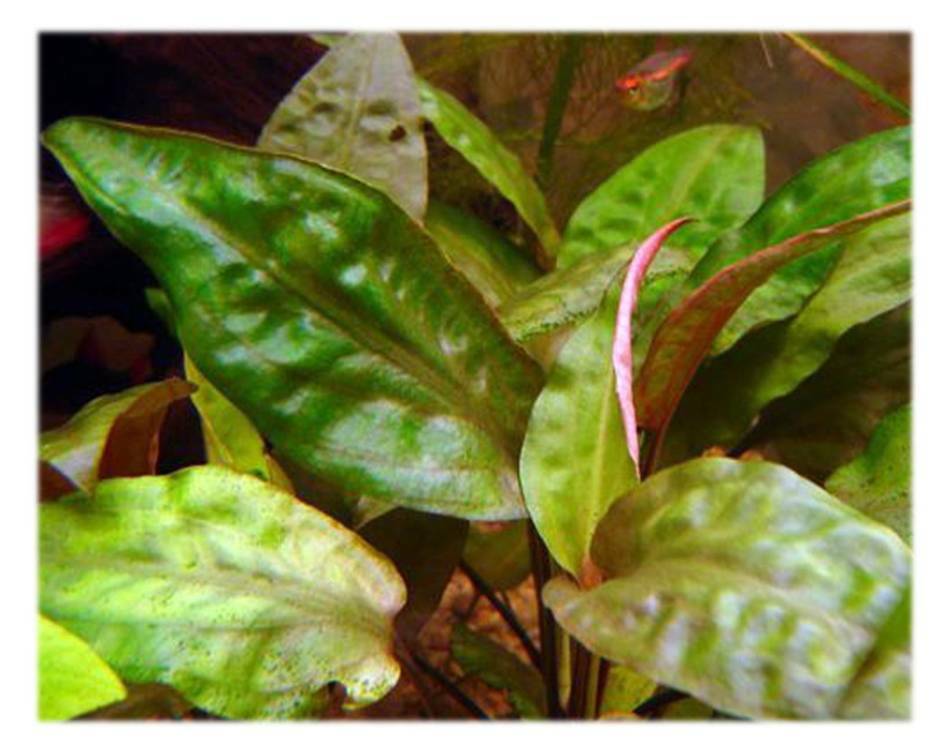 Cryptocoryne - aquarium plant
Cryptocoryne - aquarium plant Cryptocoryne - popular plant for the aquarium. Its leaves are painted in red, bronze, green colors. Plants can be the same color or just the whole mixture. Cryptocoryne does not require a lot of light, but it is difficult to transfer from one place to another.
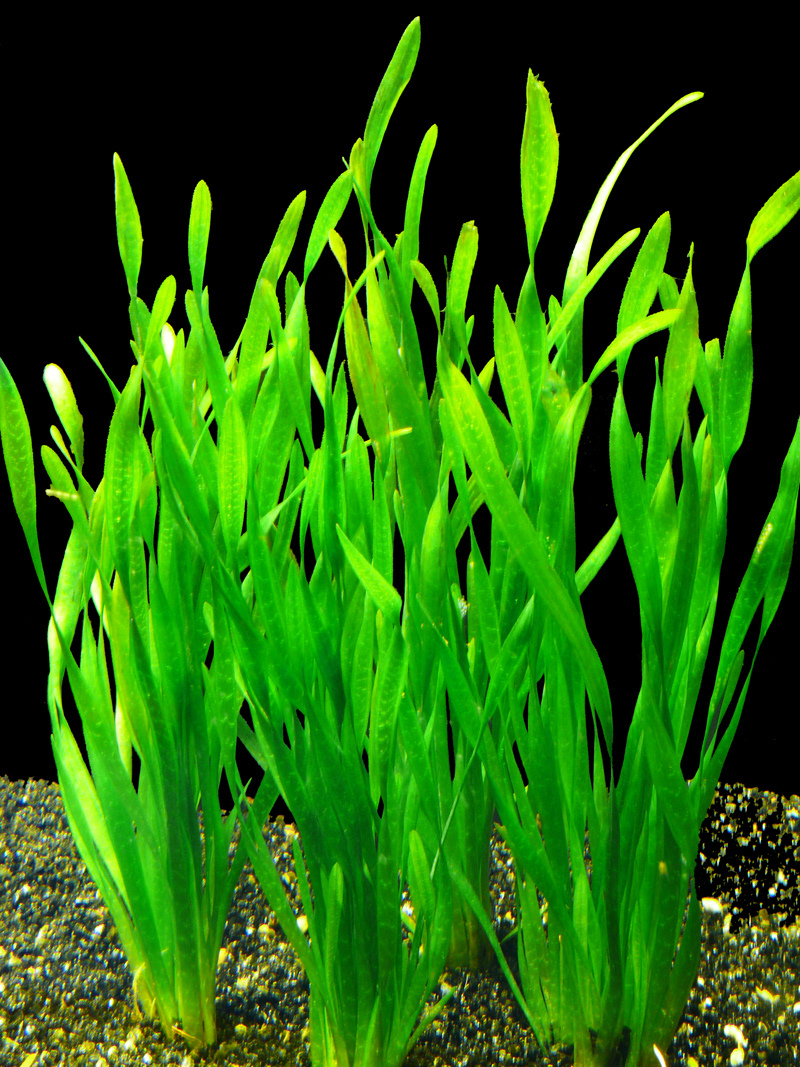 Vallisneria - aquarium plant
Vallisneria - aquarium plant Wallisneria - the plant is very hardy, with long green leaves twisted in a spiral. Propagates from shoots with roots.
 Sagittarius subulate - aquarium plant
Sagittarius subulate - aquarium plant Sagittarius styloid grows in a chain, in appearance - low grass, so it is usually planted in the foreground of the aquarium.
These plants do not require special care, they grow in conditions where there is not enough light, they can not be fed, but if you decide to supplement them with special supplements, they will thank you.
Best Plants for the Aquarium
 Ludwigia - Aquarium Plant
Ludwigia - Aquarium Plant Ludwigia - is a plant that is unpretentious, but beautiful for planting in an aquarium. With sufficient illumination, the tip of this plant is red, and the lower leaves are reddish.
 Hygrophilic patterned - aquarium plant
Hygrophilic patterned - aquarium plant Hygrophilic patterned also has reddish leaves with whitish veins, 30-50 cm high, under sufficient illumination of the aquarium. The plant must be planted in a substrate. The water temperature should be at least 24 ° C.Propagated by cuttings.
 Humboldt's flower-hulk - aquarium plant
Humboldt's flower-hulk - aquarium plant Humboldt's hornbill comes from South America. Suitable for large aquariums, since it can reach 1 m in height. The leaves are green, heart-shaped, smooth with clear veins. In favorable conditions, the plant blooms. Flower of 5 petals, white, middle yellow. The petals are covered with hairs. He likes bright lighting, soft water, in summer 20-30 ° C, in winter 15-18 ° C, does not like sudden temperature changes.
Aquarium plants, like everyone else, can get sick. The main signs of plant disease :
- Plants thin, elongated, stunted and pale, discard young leaves - lack of lighting.
- Plants are twisted, sometimes with holes, pale - lack of fertilizers.
- Slow growth of plants, their edges turn yellow - they lack carbon dioxide.
Unpretentious plants for the aquarium
The most unpretentious plants for planting in an aquarium are plants that have roots, but do not require planting them in the ground. They attach themselves to anything( dry branch or stone, specially placed in the aquarium).
These plants include:
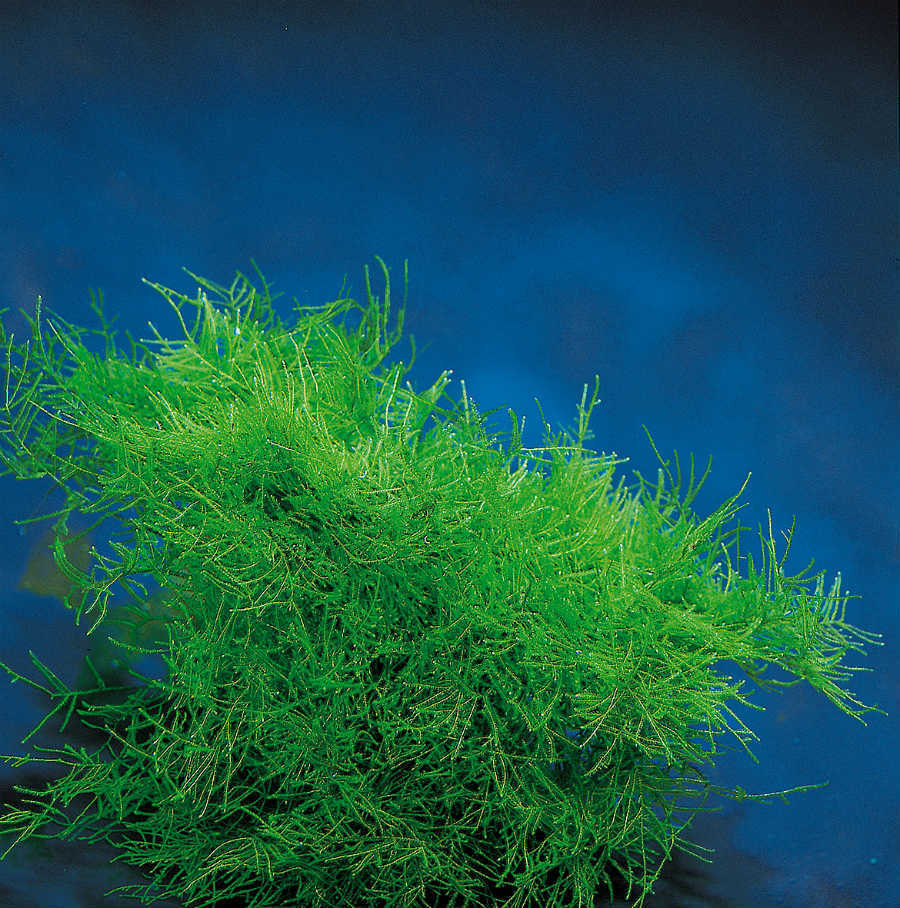 Javanese moss - aquarium plant
Javanese moss - aquarium plant Javanese moss is a bundle of tangled roots, from which later thin dark green leaves grow. It grows quickly. In moss like to spawn fish: barbs and zebrafish. After the appearance of fry, moss is a food for fish and shrimp.
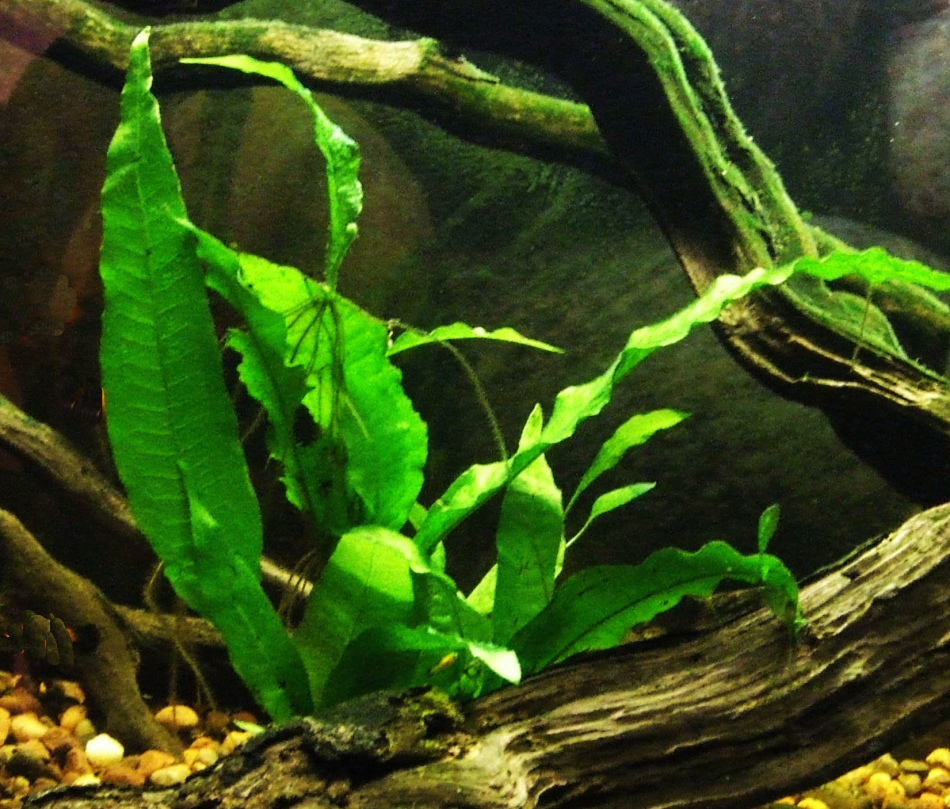 Javanese fern - aquarium plant
Javanese fern - aquarium plant Javanese fern grows from petioles, which independently break away from the plant and float on the surface of the water until they attach to something.
 Anubias - aquarium plant
Anubias - aquarium plant Anubias grows equally on top of water and at depth. The plant has broad leaves, unpretentious, survives in a poorly lit aquarium.
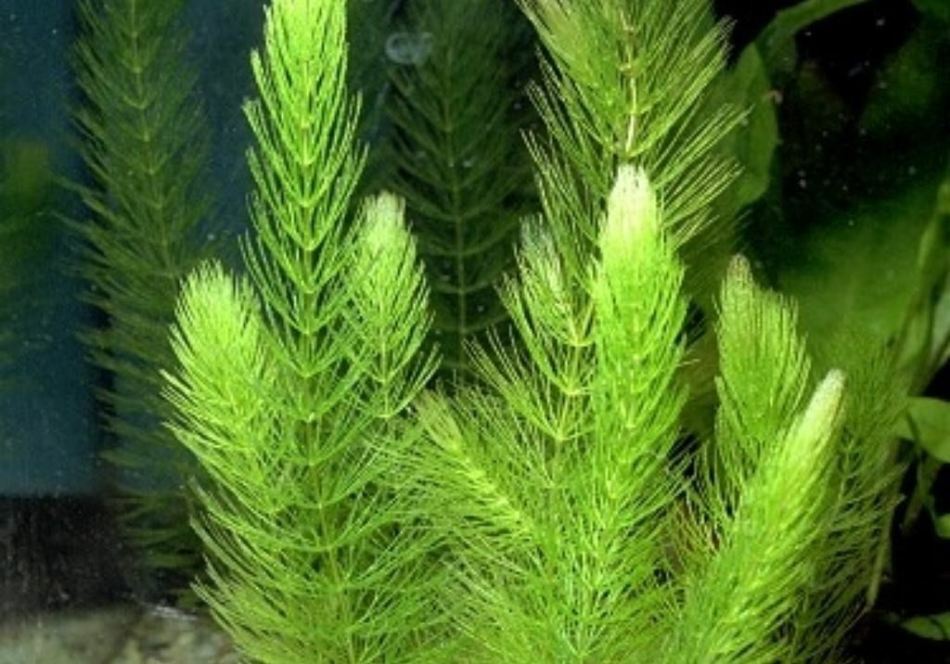 Hornwort - aquarium plant
Hornwort - aquarium plant Hornwort is similar to young pine branches. It grows in an aquarium on the water surface or is attached to dry branches, set specially in an aquarium, pebbles. The plant is unpretentious, the temperature of the water in which it grows - from cold to warm. It grows quickly from twigs.
 Elodea Densa - aquarium plant
Elodea Densa - aquarium plant Elodea Densa is a plant with drooping long roots and dark green leaves stretching upwards. Can swim or attach to something. It grows well. Elodea - food for goldfish, mollies.
Aquarium Plants for Beginners
Plants intended for aquariums for beginners are characterized by:
- Rapid growth
- Resistance to low-light conditions of the aquarium
- They do not need to specifically supply carbon dioxide
Plants produce oxygen, and ammonia, nitrates.
Beginners can recommend aquarists to plant floating plants with roots hanging in the water. So the plant eats. Sometimes such a plant even blooms, flowers are also on the water surface.
 Duckweed - aquarium plant
Duckweed - aquarium plant Duckling - small leaves like clover, float in water, on its surface. The plant grows very quickly from the leaf or stem. If it multiplies very much, then it is difficult to withdraw. The fry hide in the duck, and at the beginning of their life they feed on it.
 Frogfish - aquarium plant
Frogfish - aquarium plant Frog - leaflets similar to duckweed, only larger in size, sometimes it can bloom with white flowers. It reproduces less intensively than duckweed.
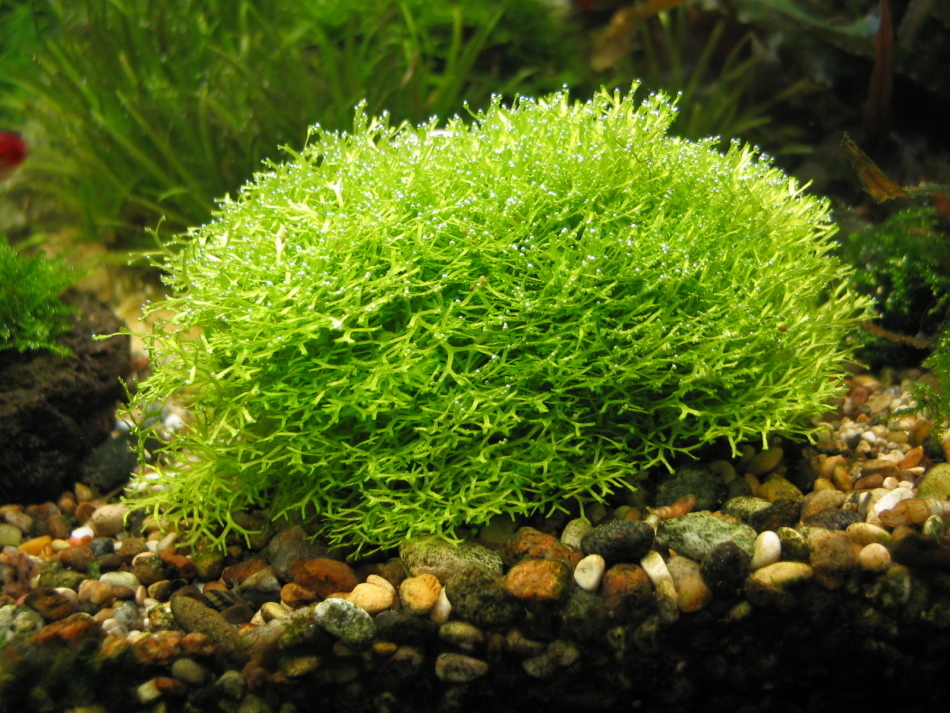 Riccia - aquarium plant
Riccia - aquarium plant Riccia is similar to duckweed, grows quickly in small groups, like an openwork moss. From strong light near the surface of the water can wither and die. If riccia greatly expanded, it can sink to the bottom. She is well eaten by fry. For riccia, you need to change the water frequently. The water temperature required for riccia growth is greater than 22 ° C, soft or neutral.
Artificial plants for the aquarium: photo
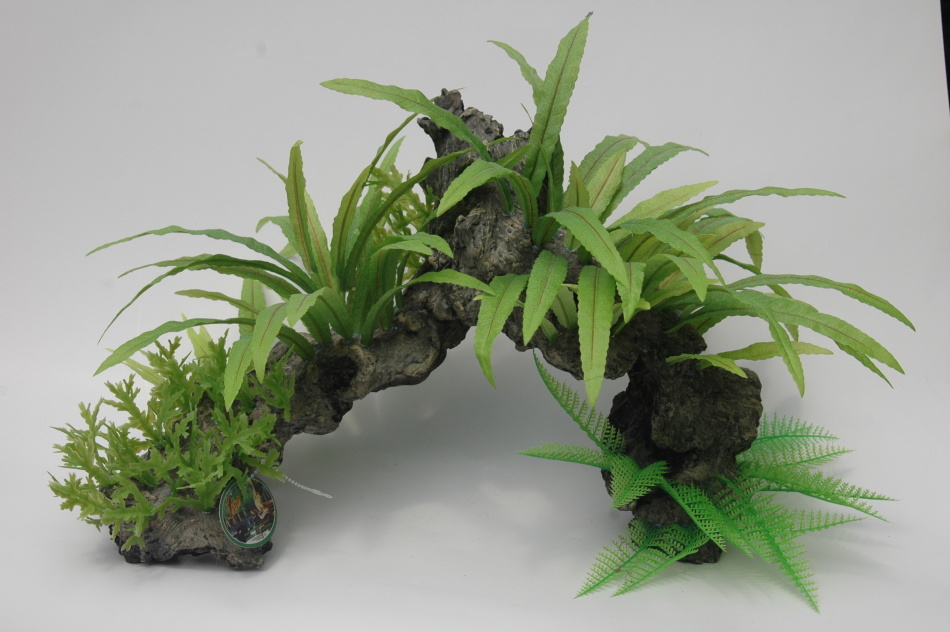 Artificial aquarium plant
Artificial aquarium plant 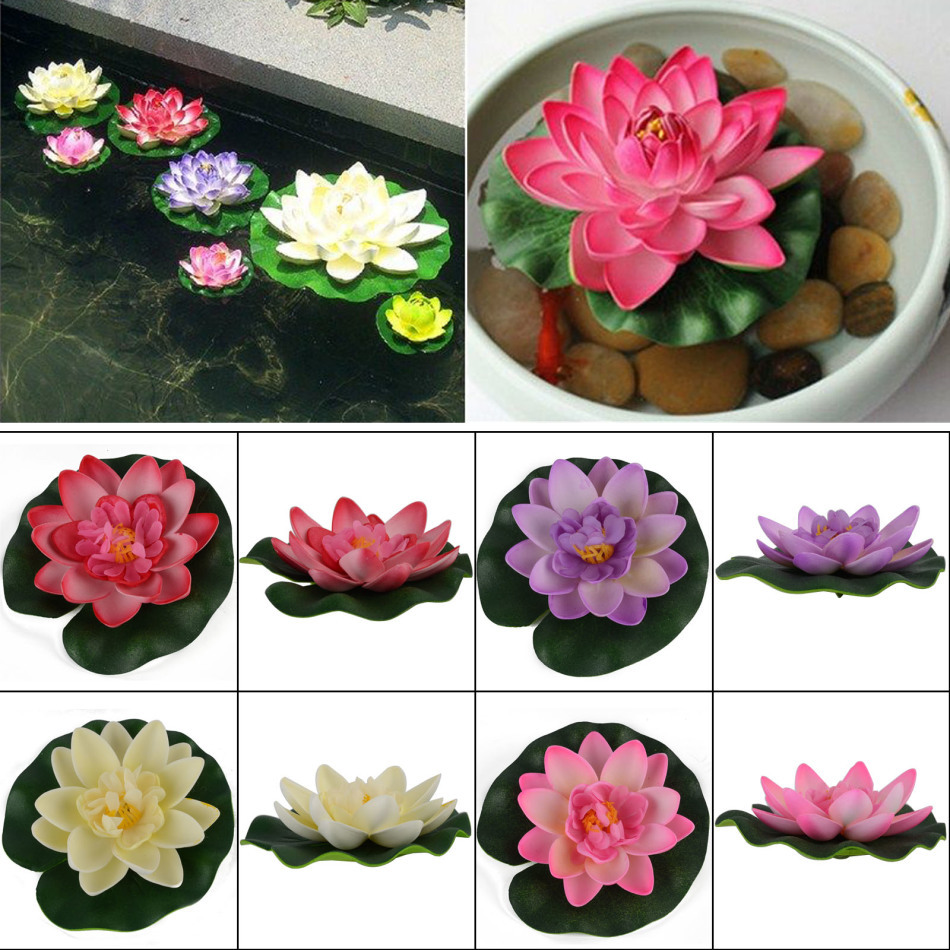 Artificial aquarium plant
Artificial aquarium plant Artificial plants only buy for a beautiful view in the aquarium .They do not bring any benefit, on the contrary, they are settled by inferior algae that harm the fish.
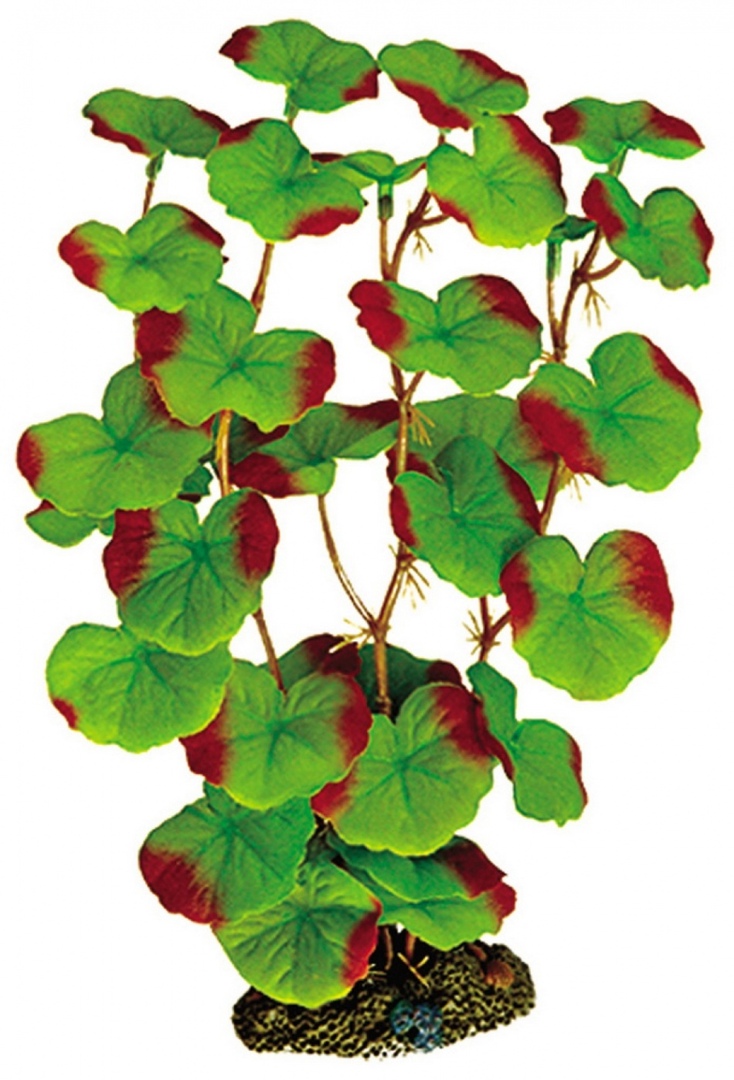 Artificial aquarium plant
Artificial aquarium plant 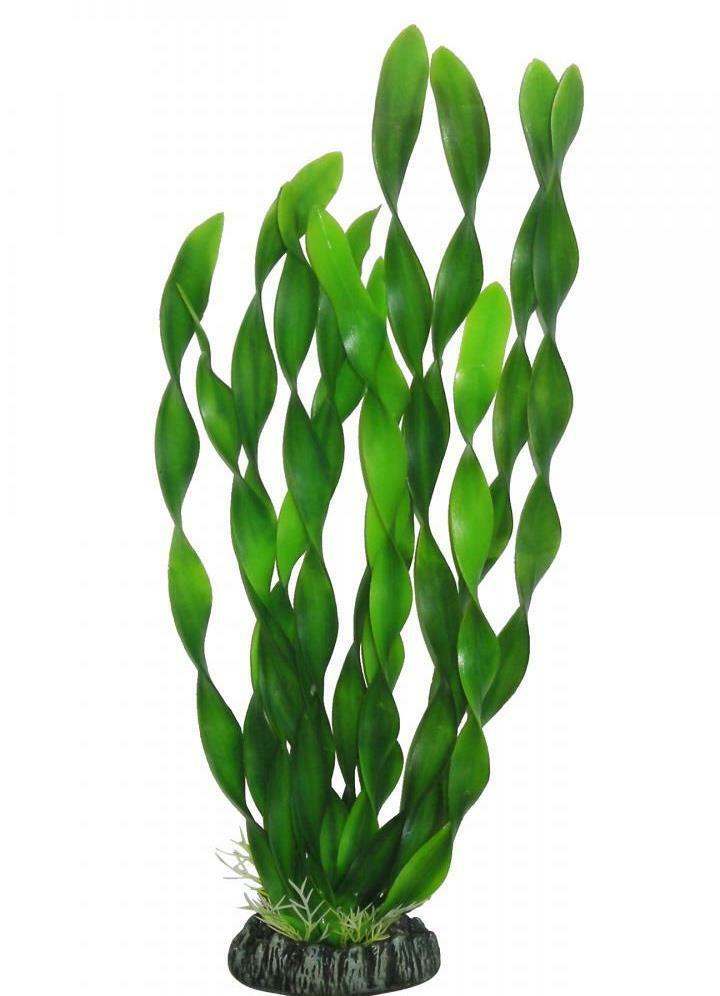 Artificial aquarium plant
Artificial aquarium plant After a while, plastic flowers become unsuitable, and they need to be thrown away.
Your aquarium is full of plants. Now you can calmly leave the week off for 2-3 weeks and leave the fish - they will not die, they have something to eat.
